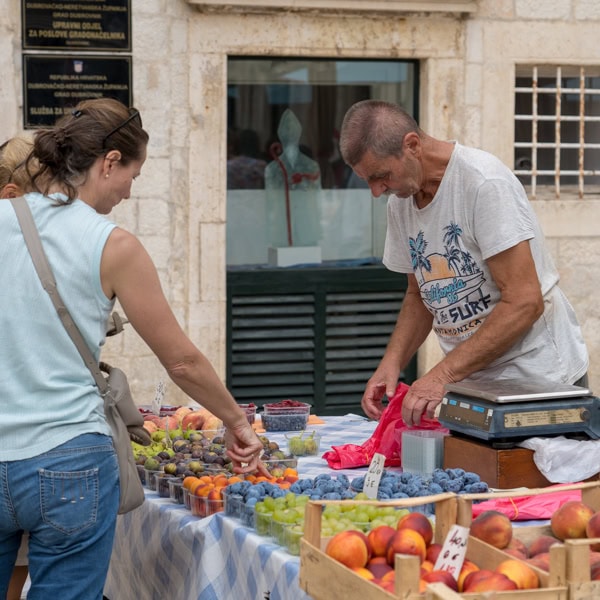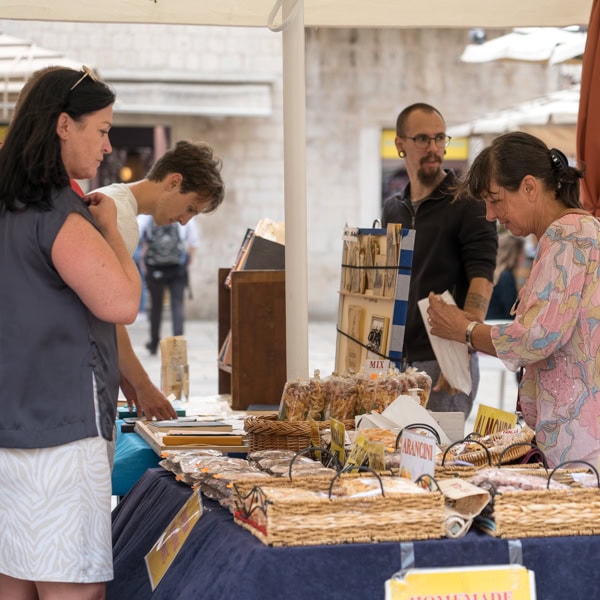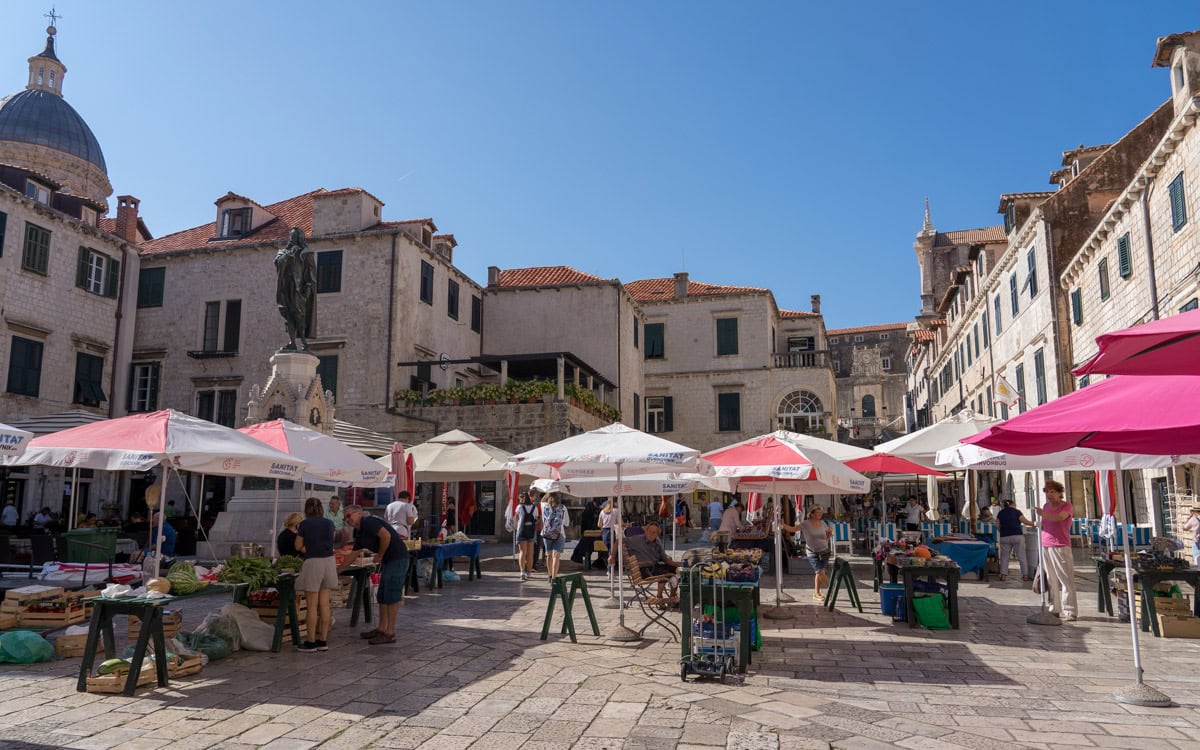
Gundulić Square, located at the eastern end of Dubrovnik’s Old Town, is a historic square popular for its morning market and bronze monument. The small square is situated at the east end of Ulica od Puča, just south of the Stradun, near the Dubrovnik Cathedral and the Jesuit Stairs.
Gundulić Square, also known as Gunduliceva Poljana, is named after Ivan Gundulić (1589-1638), a prominent Baroque poet and playwright. Gundulić is the national poet of Croatia.
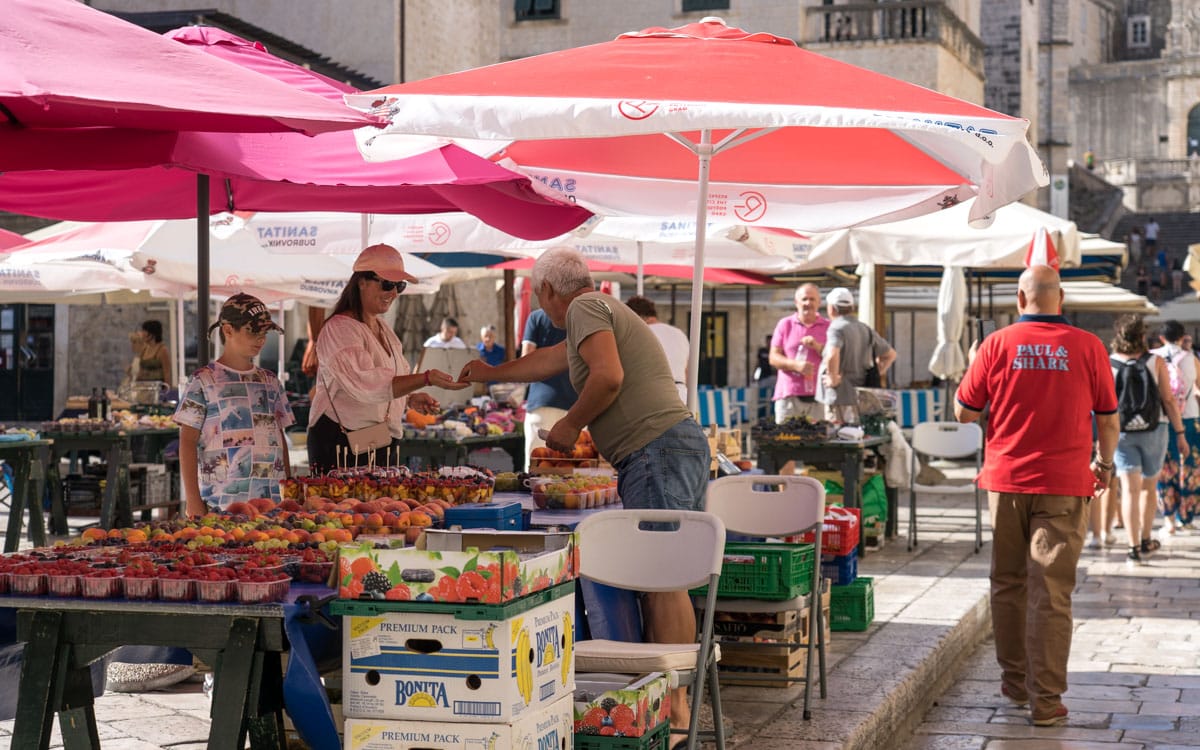
During the 1667 Dubrovnik earthquake, the city and the surrounding area, including what is now the square, were left in ruins. Once the rubble cleared, an open space remained. The area, known as Poljana (‘the field’ or ‘open square’), became an informal gathering place where locals sold produce, wares, and traded goods.
Over the centuries, the square has served as the city’s main open-air market, where farmers and artisans have sold a wide range of goods, including vegetables, fruits, cheeses, dairy, flowers, and local crafts. Strict quality controls ensured products sold at the market were of high quality.
While the market today caters mainly to tourists, it remains a popular morning destination in Dubrovnik. Every day except Sunday, local vendors set up stalls from early morning until early afternoon. They offer a variety of goods, including fresh produce, herbs such as lavender, homemade bread, sweets, olive oil, artisanal items, jewelry, and souvenirs from the Dalmatian Hinterland.
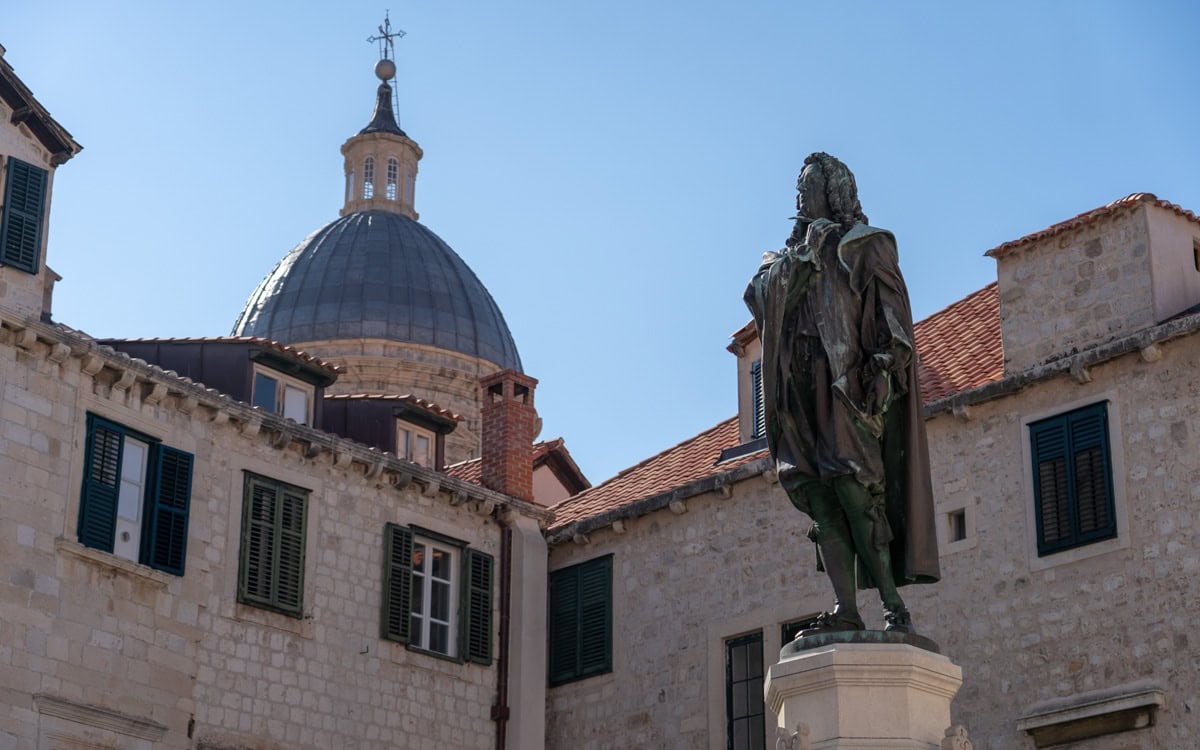
In the late 19th century, the government approved a monument to commemorate the 300th anniversary of the birth of Gundulić. The Monument of Ivan Gundulić, created by Ivan Rendić, was unveiled to the public at an event in the summer of 1893. The event also highlighted Dubrovnik’s political divisions before World War I.
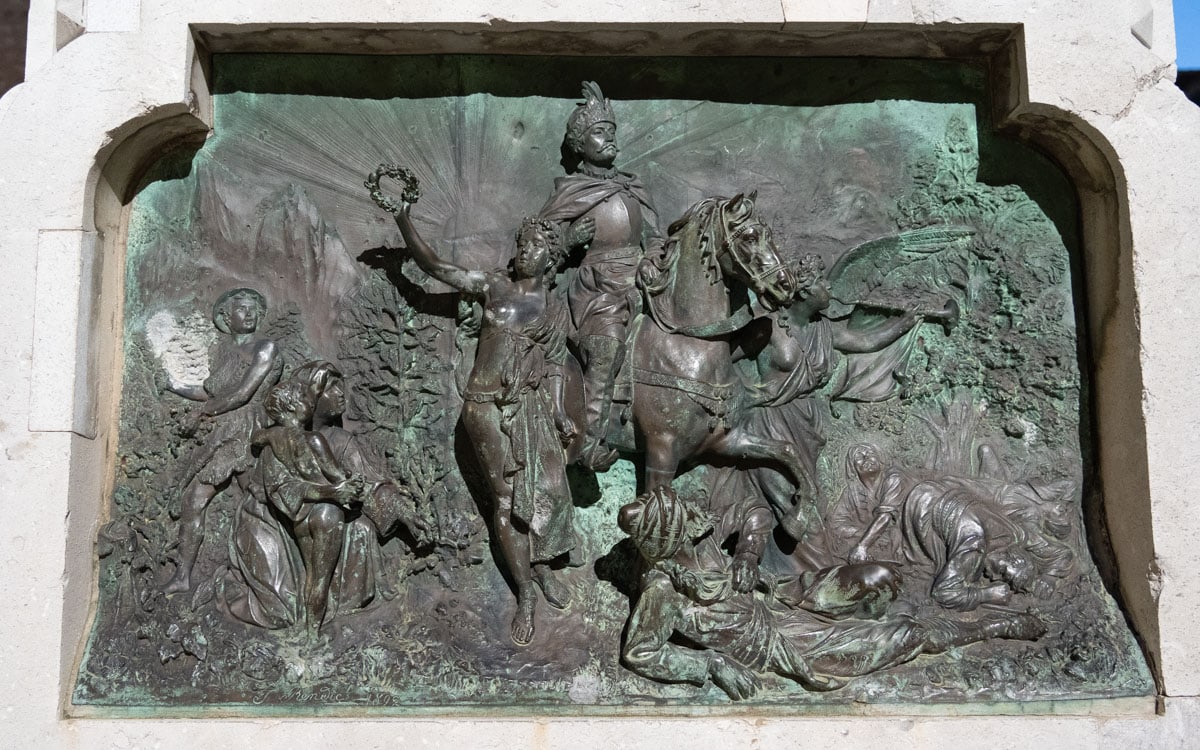
The monument still stands in the middle of the square and is a popular place for tourists, and pigeons, to relax. On the pedestal of the monument are reliefs depicting scenes from Osman, one of Gundulić’s most notable works.
Gundulic Square also serves as a venue for the Dubrovnik Summer Festival. It also hosts various concerts, performances, and gatherings. If you are at the square at noon, you can watch the pigeon feeding. During this daily local ritual, a city worker scatters a bucket of corn on the cobblestones, attracting hundreds of pigeons.
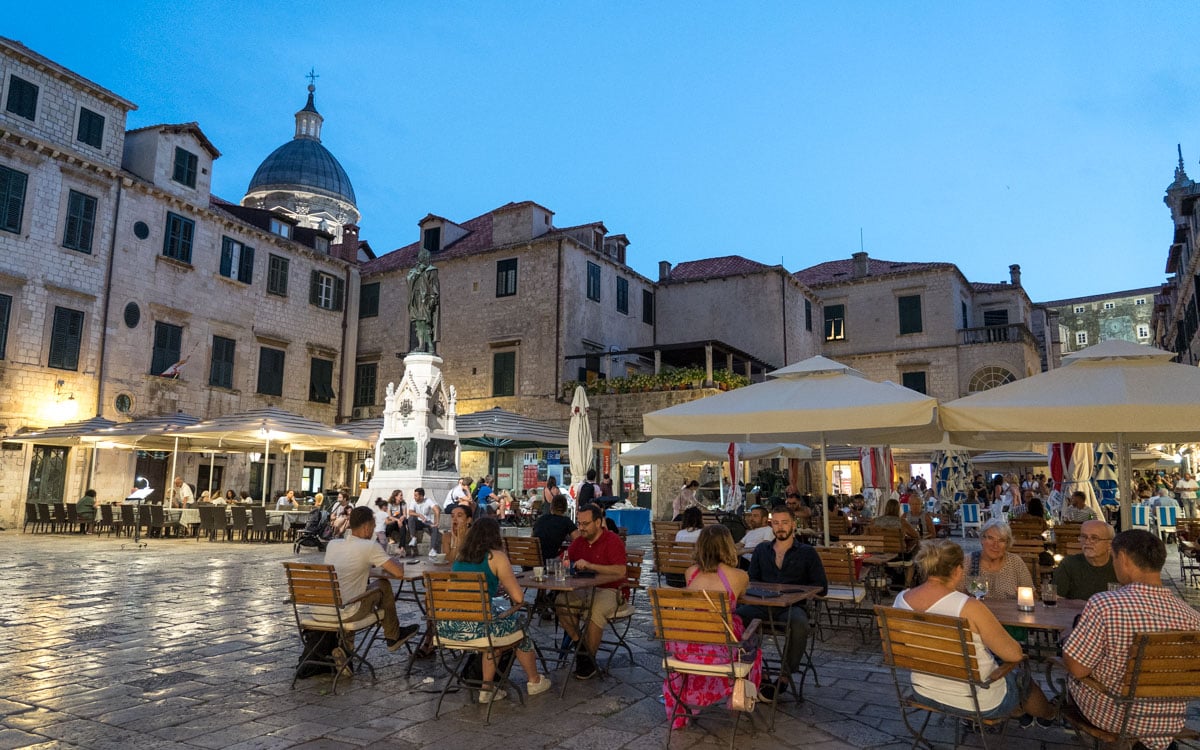
Today, Gundulić Square remains a favorite spot for both locals and visitors in Dubrovnik. Even if you’re not there for the market or an event, just sitting at one of the outdoor restaurants and admiring the surrounding Baroque architecture makes for a memorable experience.
Gundulić Square Information
Hours
24 hours
Admission
Free
Map
Nearby Sights
Statue of Marin Držić
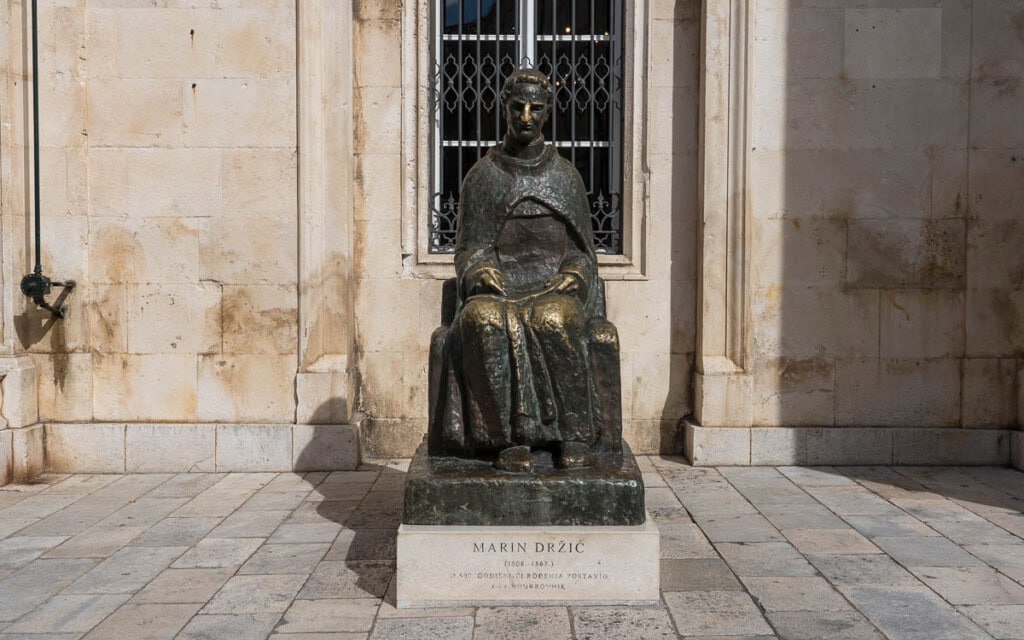
At the eastern end of the Stradun, across the street from the Church of St. Blaise, is the bronze Statue of Marin Držić. At the bottom of the seated statue is a plaque that reads "MARIN DRŽIĆ (1508-1567) - On the occasion of the 500th anniversary of his birth - City of Dubrovnik."
Church of St. Blaise
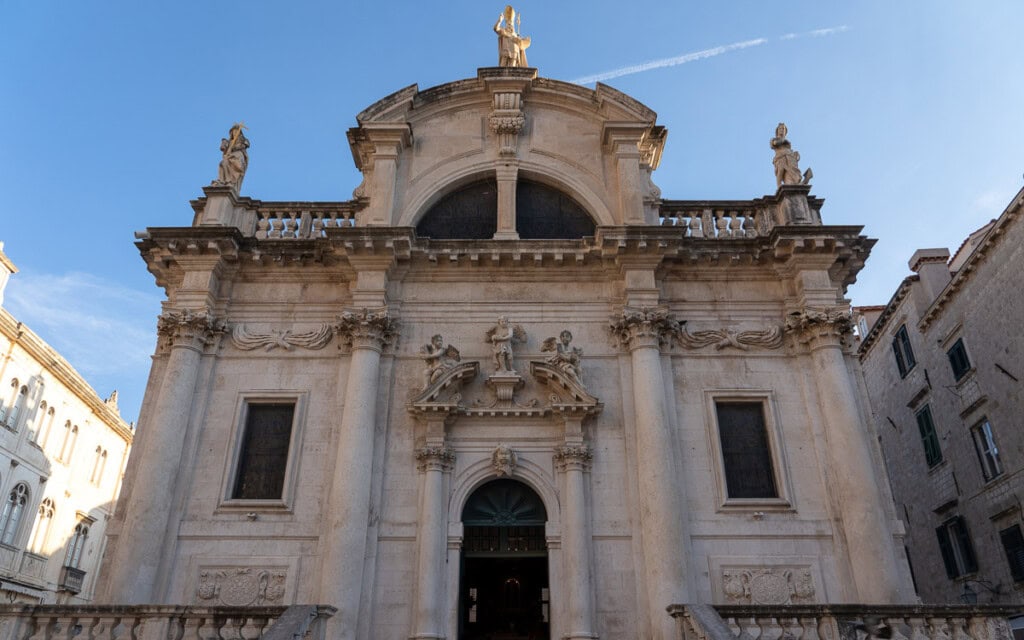
The Church of St. Blaise, located on the eastern end of Stradun, is one of the most iconic and famous landmarks in Dubrovnik, Croatia. The church, dedicated to Saint Blaise, the patron saint of Dubrovnik, dates back to the early 18th century. A Romanesque church stood at this location from the 14th century until the middle of the 17th century.
Luža Square

Luža Square, at the eastern end of Stradun, is one of Dubrovnik's busiest and most historically significant central squares. It has been an important meeting point for centuries and is home to some of the city's most significant landmarks, making it a must-visit spot in the Old Town. Since the Middle Ages, Luža Square has been a central meeting place for citizens of the Republic of Ragusa, present-day Dubrovnik.
Orlando's Column
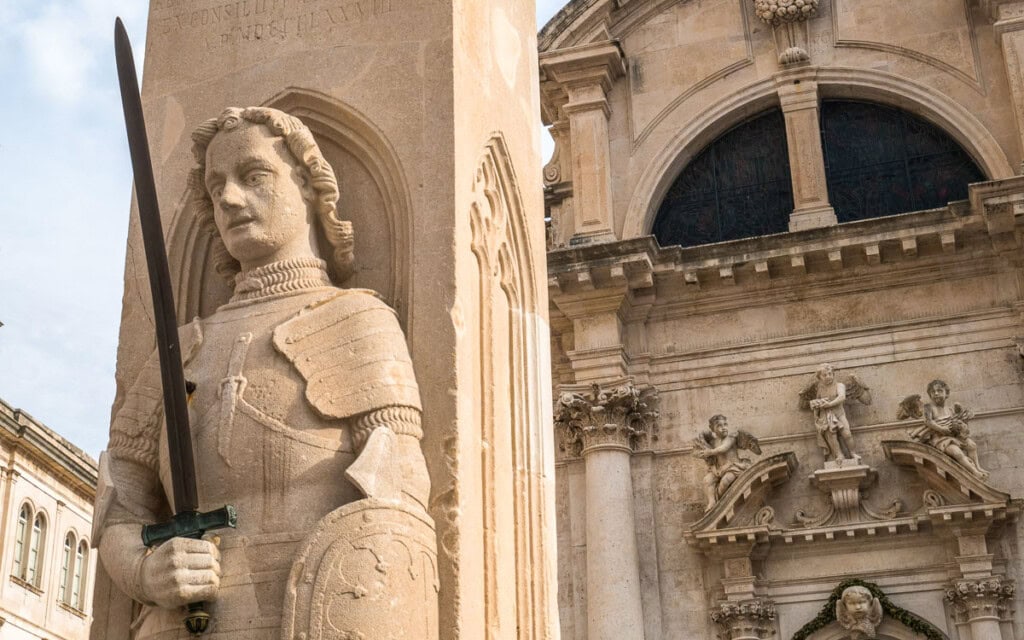
In the center of Luža Square, on the eastern end of Stradun, is Orlando's Column, a historic stone monument dating back to 1418. Carved into the statue is a heroic medieval knight who defended Dubrovnik from invaders. In 1418, Bonino di Jacopo, an Italian master sculptor from Milan, built the column with the help of local sculptor Antun Dubrovčanin.
